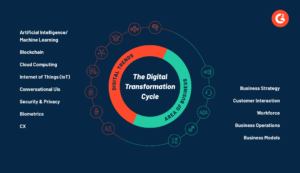The way we work and do business has changed significantly in recent years. From the rise of remote work to new income opportunities like digital products, influencer marketing, and different business models such as dropshipping, modern professionals and entrepreneurs must adapt to these evolving trends. In this article, we will explore these four major topics and their impact on the future of business.
1. Remote Work vs. On-Site Work: The New Workplace Trends
Remote work has become a dominant trend, especially after the COVID-19 pandemic accelerated its adoption. However, many companies are now debating whether to maintain remote work, return to the office, or adopt a hybrid model.
Benefits of Remote Work
- Increased productivity: Many employees report being more productive when working from home without office distractions.
- Better work-life balance: Less commuting time leads to improved mental health and personal time.
- Access to global talent: Companies can hire the best professionals regardless of location.
Challenges of Remote Work
- Communication barriers: Virtual collaboration tools help, but face-to-face interactions can be more effective.
- Distractions at home: Some employees struggle with maintaining focus in a home environment.
- Team cohesion: Building company culture remotely can be challenging.
The Future of Work
Many businesses are adopting hybrid models, allowing employees to split their time between remote and office work. Companies must find the right balance to maximize efficiency and employee satisfaction.
2. Creating Passive Income with Digital Products
With the rise of digital technology, earning passive income has become more accessible. Digital products are an excellent way to generate revenue without physical inventory or large investments.
Types of Digital Products
- Online courses: Platforms like Udemy and Teachable allow experts to share knowledge and earn income.
- E-books and guides: Writers can sell e-books on Amazon Kindle or through personal websites.
- Digital templates and tools: Graphic design templates, financial spreadsheets, and coding scripts are in high demand.
- Subscription services: Offering premium content or exclusive access through memberships can create a steady income stream.
How to Succeed with Digital Products
- Find a niche: Research market demand and identify a profitable area.
- Create high-quality content: Provide value to your audience with well-designed and informative products.
- Use effective marketing: Promote your products through social media, SEO, and email marketing.
- Automate sales: Platforms like Gumroad, Shopify, and Etsy help automate the selling process.
Passive income requires upfront effort, but once established, it can generate long-term financial security.

3. The Rise of Influencer Marketing
Influencer marketing has grown exponentially as brands recognize the power of social media personalities in driving engagement and sales. It is now an essential part of digital marketing strategies.
Why Influencer Marketing Works
- Authenticity: Consumers trust recommendations from influencers more than traditional ads.
- Targeted reach: Influencers have specific audiences, making campaigns more effective.
- High engagement rates: Social media users interact more with influencer content than brand advertisements.
Types of Influencer Partnerships
- Sponsored posts: Brands pay influencers to promote their products on social media.
- Affiliate marketing: Influencers earn a commission for each sale made through their referral links.
- Product collaborations: Companies create exclusive products with influencers to boost sales.
- Brand ambassadorships: Long-term partnerships where influencers represent a brand over time.
How to Leverage Influencer Marketing
- Choose the right influencers: Look for engagement rates and audience demographics rather than just follower count.
- Develop authentic campaigns: Ensure the collaboration aligns with the influencer’s brand and followers.
- Track performance: Use analytics tools to measure ROI and adjust strategies accordingly.
As influencer marketing continues to evolve, micro-influencers (with smaller but highly engaged audiences) are becoming key players in brand promotions.
4. Dropshipping vs. In-House Production: Choosing the Right Business Model
Starting an online store has never been easier, but entrepreneurs must decide between dropshipping (selling products without inventory) and in-house production (creating and storing their own products).
Dropshipping: Pros and Cons
Pros:
- Low startup costs: No need to invest in inventory.
- Wide product variety: Sell multiple products without storage limitations.
- Scalability: Easily expand product offerings.
Cons:
- Lower profit margins: Suppliers take a cut of earnings.
- Shipping delays: Longer delivery times due to third-party fulfillment.
- Less quality control: Dependence on suppliers for product quality.
In-House Production: Pros and Cons
Pros:
- Higher profit margins: Full control over pricing and costs.
- Better quality control: Direct oversight of product creation.
- Stronger brand identity: Unique, personalized products stand out.
Cons:
- Higher initial investment: Requires inventory and production resources.
- Storage and logistics management: Handling packaging and shipping increases complexity.
- Slower scaling: Expanding production takes more time and effort.
Which Model Is Best?
- Dropshipping is ideal for beginners looking to start an online business with minimal risk.
- In-house production is better for entrepreneurs aiming for brand differentiation and higher profit margins.

The future of work and business is evolving, and staying informed about these trends is essential. Remote work is here to stay, offering flexibility while requiring new strategies for collaboration. Digital products provide an excellent opportunity for passive income, while influencer marketing continues to reshape advertising. Finally, choosing the right business model—whether dropshipping or in-house production—can make a significant difference in long-term success.
By adapting to these changes and leveraging modern opportunities, entrepreneurs and professionals can build sustainable careers and businesses in the digital age.





